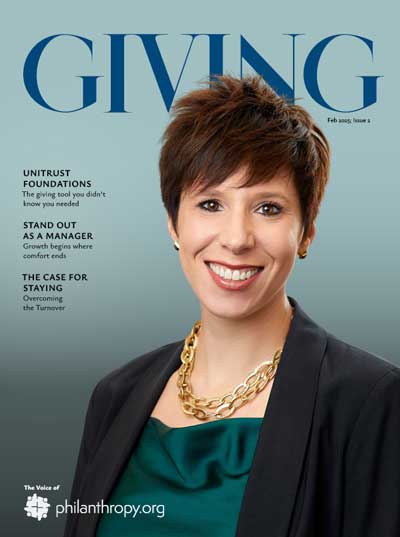Trust is crucial, whether you run a business or a nonprofit. Trust is the glue that holds your network of supporters together, and it’s the foundation upon which repeat donations are made. Trust is probably the most important metric by which your organization is measured. Without it, you won’t raise a dime. That’s why trust is the most important element of fundraising.
Trust is an Element of Fundraising that Doesn’t Happen Overnight
But achieving trust doesn’t happen overnight. It takes time, persistence, consistency, and dedication. It also takes audience awareness of your “brand.” And creating that awareness means consistent marketing — an investment far too many nonprofits are afraid to make.
What do I mean by consistent marketing? I mean you can’t adopt a “one and done” attitude about it. Studies show it takes between five and seven impressions just to be remembered by your audience — and that’s just dipping a toe in the waters of “trust.”
Sending out the occasional postcard, flier, or donation request will actually do more harm than good. It sends a message that your organization is unprofessional, inconsistent, and careless. Instead, shoot for the long game, with a cohesive marketing strategy.
Stay on Brand
In order to achieve trust, consistency is also important in your branding. That means creating and following a brand style guide. Consistency is important to branding, and branding is an essential element of fundraising success.
A brand style guide is essentially a rule book that shows how your nonprofit communicates your brand. It includes color palettes, logos, typography, imagery, the “voice” and tone you use in content, and more.
Deviating from your brand style confuses your prospects. “Wait, doesn’t Our Favorite Nonprofit have a square logo that’s green and blue? This must be a scam … the logo is a different shape and color!” (This article has some more important stats on branding.)
Keep it Real
Of course, the most important thing you can do to achieve your supporters’ trust is to be, well, trustworthy. Your organization must be accountable, transparent , and keep its finances in order. You need to respond quickly to donor questions and complaints. And you need to put donors and volunteers on a pedestal.
That means saying “thank you,” early and often. It means being donor-centric. And it means actively fostering relationships with your supporters.
Fundraising takes a lot of trust, and planned giving takes even more. That’s why you need to focus on this very important element of fundraising. You’re talking to people about their finances, their core beliefs, and their end-of-life plans. You’re discussing what’s going to happen to their most sacred possessions after their death.
And if you’re not standing on a solid foundation of trust to begin with, you’ll soon find you’re not just treading water — you’re treading quicksand.
I can’t sell you a silver bullet to build trust, but I can show you how our planned giving marketing solutions helps you achieve it faster. If you’re interested in discovering how, schedule a conversation with me personally.
You’ll see how easy it can be. Trust me. 🙂
Happy fundraising,
Credibility
Care
Congruency
Meet these three criteria on a consistent level.
Categories: Relationships, Sustainability



